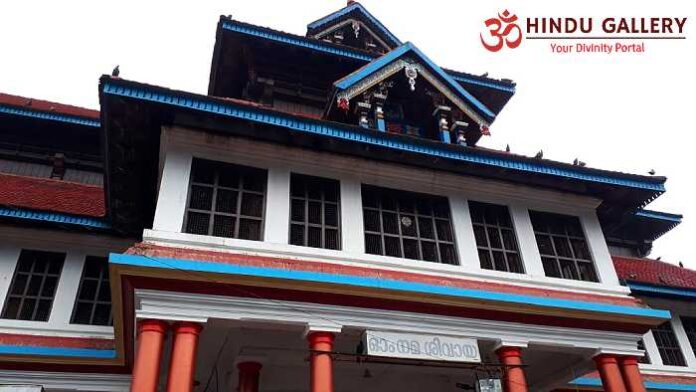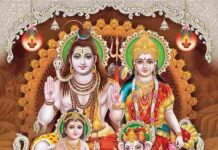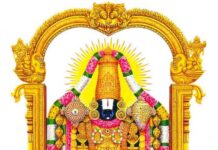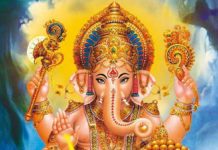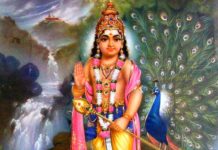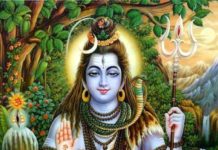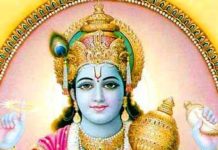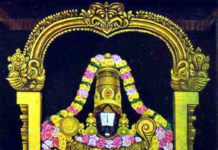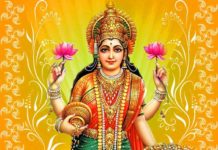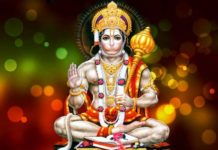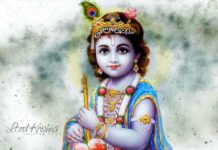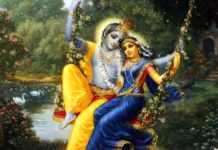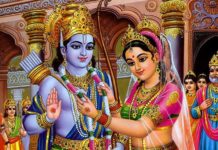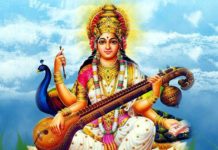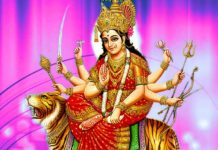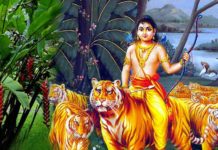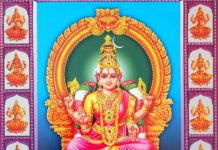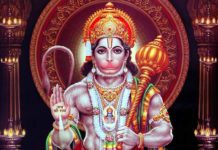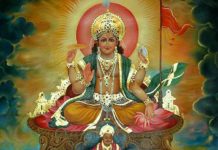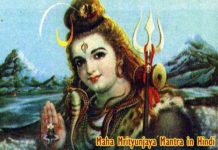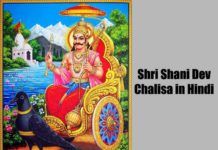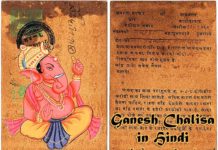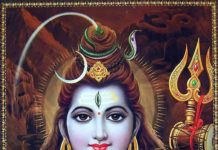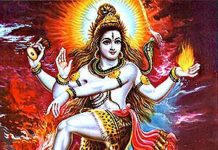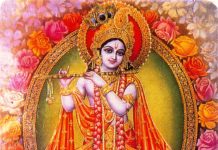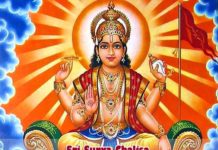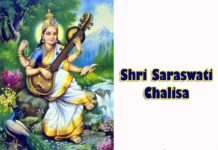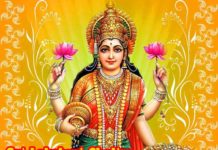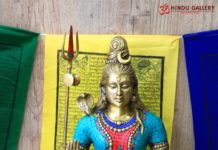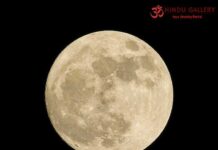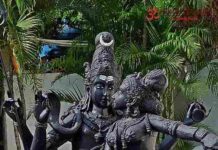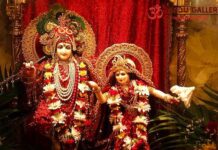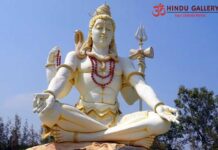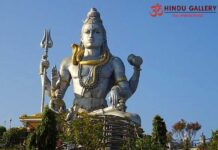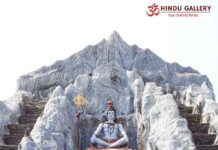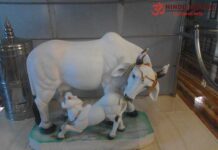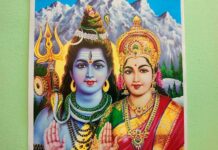Sri Maha Deva Temple is situated at Chengannur. Chengannur is at Alapuzha district of Kerala. It is enroute Sri Sabari Mala.
It is also one of the 32 Namboothri villages in Kerala. The holy river Pampa flows through the town and there are many temples along the banks of the river.
Sri Maha Deva Temple is the prominent Shiv temple at Chengannur. Here Sri Mahadeva is considered as the Deity of the Chengannur Village. The temple is also called as Sri Bhagavathi temple.
Sri Maha Deva Temple – Legend
The origination of the temple is connected with the wedding of Lord Shiva and Goddess Parvathi.
Parameshwara wedding
When Lord Shiva had planned for His wedding with His consort Sri Parvathi (Shakthi) at Himalayas, everybody wanted to attend there.
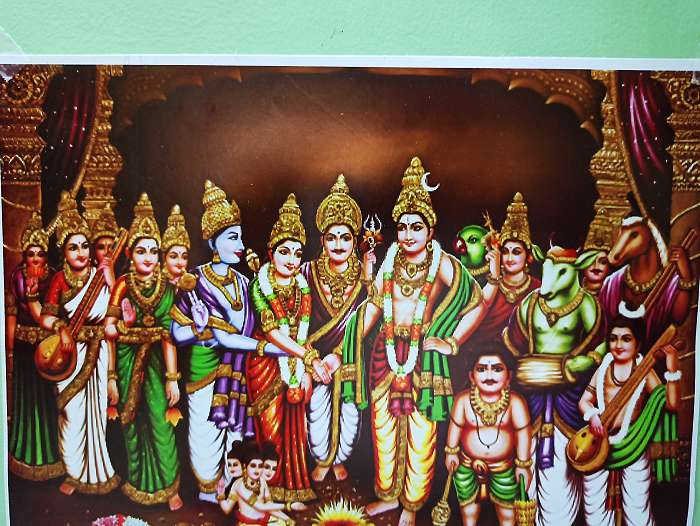
God surmised that due to the migration of huge crowd to the North, the Southern side may get dipped.
Sage Agasthya
So, Lord Shiva had ordained Sage Agasthya to remain in the South so as to balance the earth. He had promised Agasthya that He would give darshan alongwith Sri Parvathi in the wedding attire later.
Post wedding
When Sri Shiva and Sri Parvathi came to the South to give darshan to Sage Agasthya, Goddess Parvathi had her period for 28 days. Hence, she could not come out. Sage Agasthya had the darshan only after 28 days.
The place where Sri Shiva and Sri Parvathi stayed and gave darshan to Agasthya is being considered as the temple premises. This temple is also considered as Dakshina Kailasam. As Goddess Sri Parvathi had her mensuration here, it is also considered as a Shakthi Sthal.
Sri Maha Deva Temple – construction
As per the legend, prior to the construction of the temple, a person named Nayanaru pillai had leased the place for his living.
Sighting of rock
One day, his servant maid was sharpening a knife on a rock. She sighted the blood oozing from the rock.
She immediately informed her master. He in turn called in Sri Vangipuzha Thamburan and Sri Thazhaman Potty, the spiritual Gurus of the place.
Gurus’ prophecies
Sri Thazhaman Potty had surmised that a temple ought to be built on the place for Sri Eswara and Sri Bhagavathy. The plans for the temple were made by Sri Perumachuthan, the renowned architect of the region.
The idol of Sri Bhagavathy was first identified by him. However, he had predicted that a huge fire would devour the premises. He also had provided a panchaloha idol of Sri Bhagavathy and asked for its safe keeping. The idol was kept buried in the river.
Predictions turning true
As he had predicted, in 18th century, the temple premises were gutted with fire. The installed Bhagavathy statue was also burnt down.
As per the scriptures written by Sri Thazhamon Potty, the panchaloha idol of Sri Bhagavthy was retrieved by the fishermen named Arayas. The Thamburan had given them fruits and tender coconut as the mark of respect. This happened on the Maha Sivarathri day. The ritual is still being followed.
Sri Maha Deva Temple – structure
Most of the temple premises were re-built with the same architecture closer to the original. However, the Kuthambalam, i.e the dance hall could not be restored.
The specialty about the kuthambalam was that if all the lamps in the hall were lit, the shadow of the dancers would not appear anywhere in the hall.
Entrance
The entrance to the temple is through a two tier gopuram and the upper tier is called Kottupura, viz., house of the temple drum which is being played during festivals and functions.
The outer rectangular compound of the temple starts and ends with the Gopuram. The outer compound wall enclosing all the shrines is called Kshethra-Madilluka. It has some gateways in between. The outer pavilion inside the compound wall is called as Chuttambalam.
Dwajashthambam
On entering through the Gopuram, one can sight a Golden flagstaff / Dwajasthambam. Both the entrance and the flagstaff are axial to the main shrine which has Sri Mahadeva and Sri Bhagavathi Sanctums.
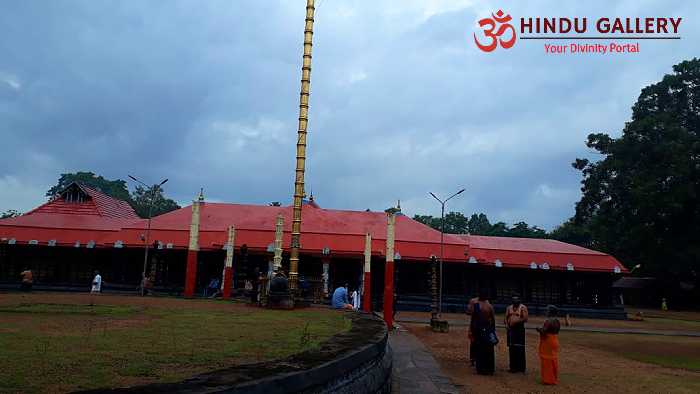
Alongwith the flagstaff, there are also lamp posts called Deepasthamba.
Sri Kovil
The Main Sanctum is called Sri kovil. It is elevated on a platform with five steps and with a single door. The images of Dwarapalakas exist on either side of the door.
Sri Mahadeva is in the form of Lingam facing East. The Lingam is gold platted and has an image of Ardhanareeswara (depiction of equality of Sri Shiva and Sri Parvathi) in the front.
Goddess Parvathi as Sri Bhagvathi is in the form of a panchaloha idol (alloy of five metals). She is exactly at the backside of Sri Mahadeva facing West.
As per the legend, the architect of the temple Sri Perumachuten himself had brought the Devi’s idol. The main shrine alongwith the rectangular hall is called as Nallambalam.
The Sri Kovil itself is constructed in the circular building. The base is built with granite and the super structure is built with laterite. The roof is conical in shape. It is filled up with mud pan tiles. The interior of the roof is supported by a wooden structure.
The lower half of the main shrine is containing wall and pillars and it is named Prasthara. The upper half is in two parts, the neck part being called Griva; the topmost part being called Shikara.
On the Shikara, a copper kalasam is kept. The roof and the pillars have wood carvings depicting epic stories.
As per rituals followed in Kerala, only the Thanthri, the main priest and Melshanthi, the second priest enter the main sanctum called Shrikovil in the temples.
Namaskara Mandapa
From the entrance of the Nallambalam to the main sanctum, an elevated platform with a pyramidical roof exists. This is called Namaskara mandapa, the place for offering pranaams.
To the left side of Namaskara Mandapa, the kitchen for preparing the offerings and prasadam is situated. Beyond the Namaskara Mandapa, a place named Balithara for making offering to demi-Gods exists.
Precincts
A small shrine for Sri Ganapathy lies in the first precinct. The shrines for Sri Neela Greevan and Sri Sastha are in the second precinct.
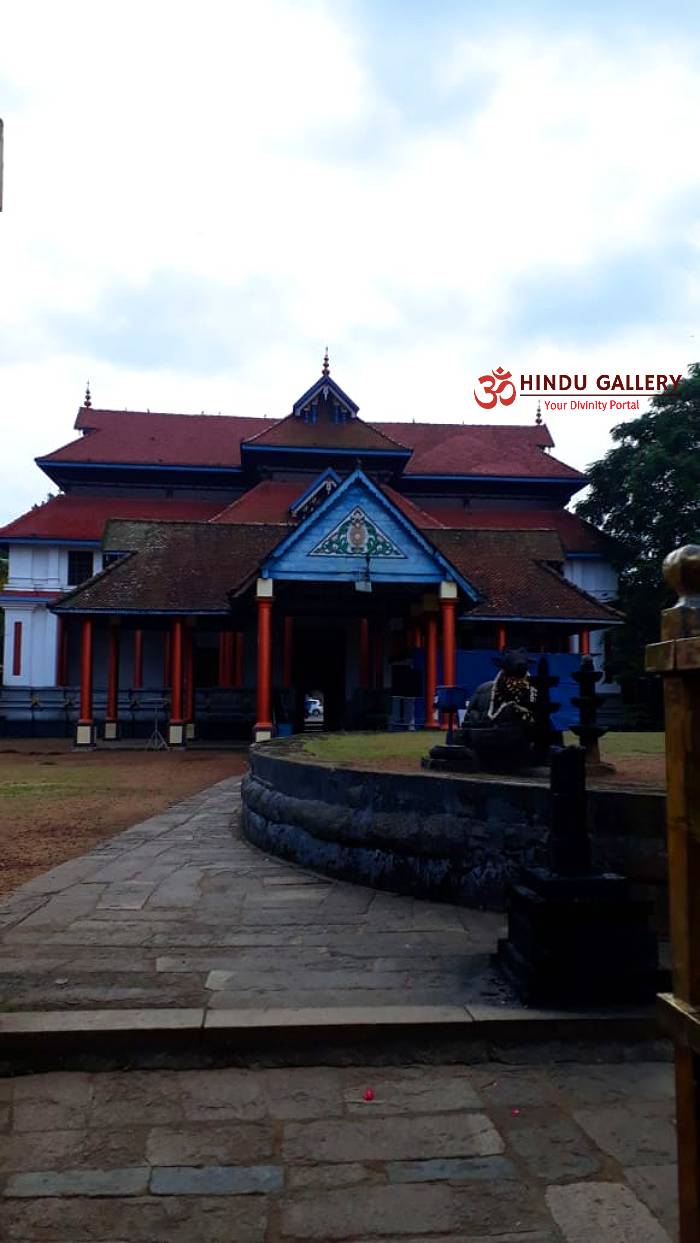
Apart from this, there are separate shrines for Sri Chandikeswarar, Sri Ganga, Sri Naagar and Sri Krishna.
All the mandapams and structures in the temple premises have exquisite and brilliant woodwork.
West entrance – legend
It is believed that the west entrance has a hole which contains a brass pipe with a snake inside.
Scholar
As per the legend, a brahmin family was living near the temple. One day, a scholar had come to the house. He challenged the prowess of the family members in spirituality.
At that time, the only male member in the family was a twelve-year-old boy. The boy could not face the scholar.
Sri Bhagavathy
The boy surrendered to Sri Bhagavathy. She appeared in his dream. She told him that the snake in the brass pipe at the west entrance shall be only under his control; With this power, he can face any challenge.
The boy’s challenge
Next day, he had confronted the scholar. He asked him to release the snake from the pipe using his powers. The scholar failed; The snake also tried to bite him.
The scholar then accepted his defeat and retreated.
Even now it is believed that if one places a hand in the hole and tell lies, the snake will bite.
Sri Maha Deva Temple – festivals
The poojas are done in the temple daily five times.
Thiruputh
A festival named Thiruputh is observed thrice a year. It is said to depict the mensuration of Sri Bhagavathy.
It is said that, earlier, this festival was celebrated every month. During Thiruputh festival, the procession Deities of Sri Mahadeva and Sri Bhagavathy are taken in a procession to the Pampa river nearby.
After a holy dip, Deities are taken back into the temple. The procession named ‘Aaratu’ used to be accompanied by carrying of Thalapoli lamps and drumming Panchavadyam.
The annual festival of the temple is observed in December – January which lasts upto 28 days.
Om Nama Shivaaya !!!
Om Bhagavathi !!!


